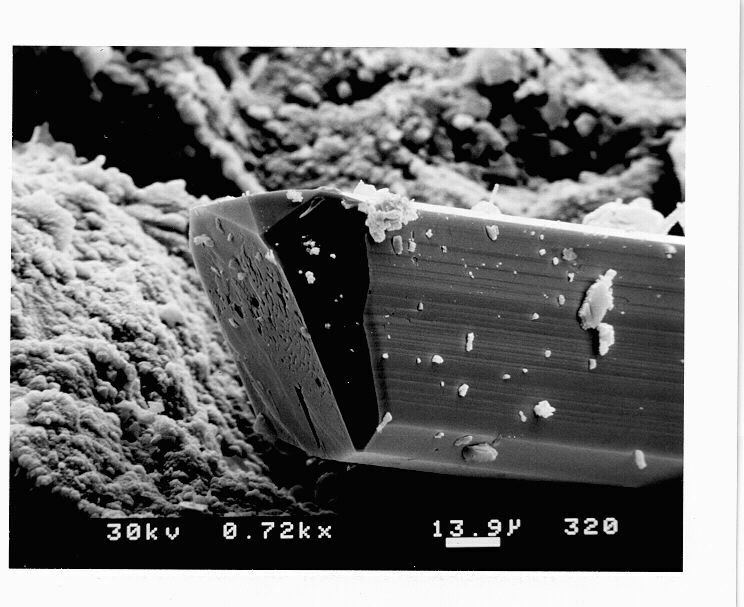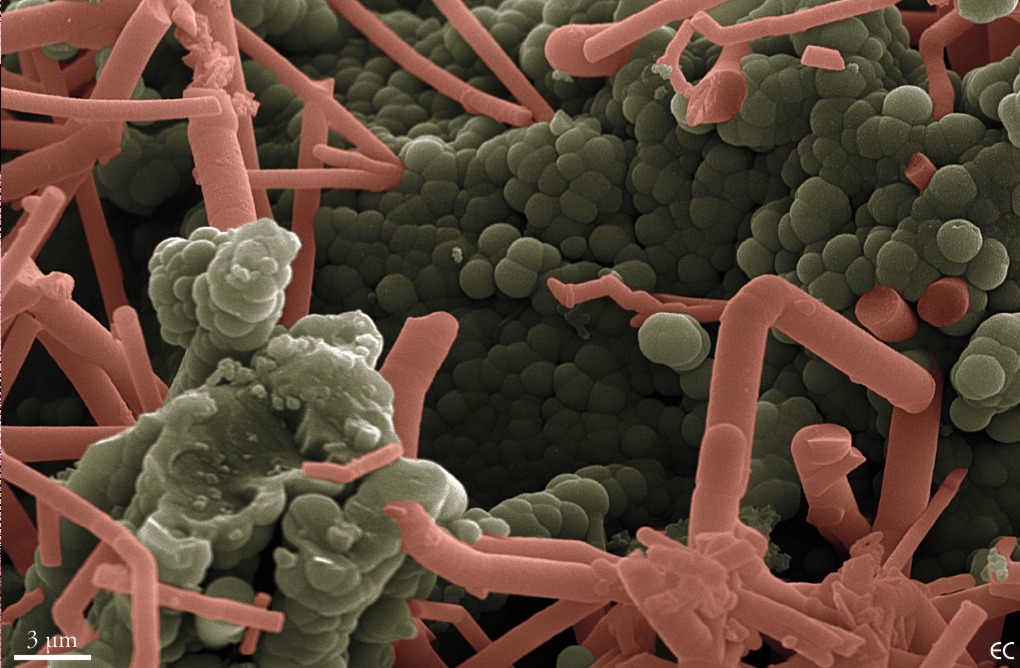
Liane G. Benning* and Bruce W.
Mountain
Institute for Mineralogy and Petrography,
ETH-Zentrum, 8092 Zurich, Switzerland
In Geochemistry of Crustal Fluids, p. 32, ERC,
1996
ABSTRACT
The deposition of precious and transition metals in ore-forming environments is strongly controlled by the solubility of their host minerals as well as by metal speciation in hydrothermal fluids. Rapid changes in phisico-chemical conditions, particularly in pH, temperature and redox potential, greatly affect metal solubility and speciation. At the Uzon Caldera, actively-forming As mineralization provides an unique opportunity to study the relationship between metal deposition and extreme shifts in fluid parameters.
The Uzon Caldera, located in the East Kamchatka volcanic zone, is a 7 x 10 km rectangular volcano-tectonic depression of the ring type, formed in the Late Pleistocene. The geothermal field has formed in response to the migration of hydrothermal fluids and their accompanying gases along vertical faults to the surface. As hydrothermal fluids reach the surface, temperature drops rapidly and this is accompanied by large shifts in redox conditions and pH(up to 4 log units). Previous studies have shown that these sharp changes result in progressive shifts in sulphur ligands (e.g. H2S, S2O32-, SO32-, SO42-, SxO62- and So(aq)). The deposition of As mineralisation coincides with these changes in sulphur chemistry.
In order to discern the relationship between As mineralisation, trace metal content, solution composition and temperature, a 40 meter profile was made across the Eastern Geothermal Field. Profiles of solid samples, with their coexisting fluids, were taken to a maximum depth of 65cm in 33 holes along the profile. Temperature profiles (35-98oC) were made at each of these locations and the pH of the hydrothermal fluid entering the bottom of each hole was measured (2.7-6.2). Chemical analysis of the different ore layers show high concentration in Hg (> 50ppm), Sb (up to 2000ppm) and Zn (up to 150 ppm) which are hosted by As sulphide mineralisation. The contents of these minerals increase with depth and, in the east part of the profile, a continuous layer rich in Hg is found. Au contents are low but anomalous (up to 157ppb) and there appears to be no clear relationship between gold content and depth. These concentrations are much higher than those reported by previous authors in the Uzon Caldera for hydrothermally altered rocks (2-4ppb) and opal incrustations (2.4ppb), suggesting a connection between As mineralisation and Au enrichment.
First results from the fluid samples show that they are NaCl brines containing significant concentrations of K, Ca and SO42-, B, As and Fe. Arsenic concentrations are the highest at the east end of the profile where the temperature at the surface reaches 98oC. A correlation between pH and As content can also be demonstrated. This is consistent with a model whereby oxidation and cooling of the fluid results in a drop in pH and precipitation of As sulphides.

Realgar on a bed of orpiment and sulphur
Bacterial filaments of As2S3
composition

False coloured image of bacterial filaments of As2S3 composition
![]()